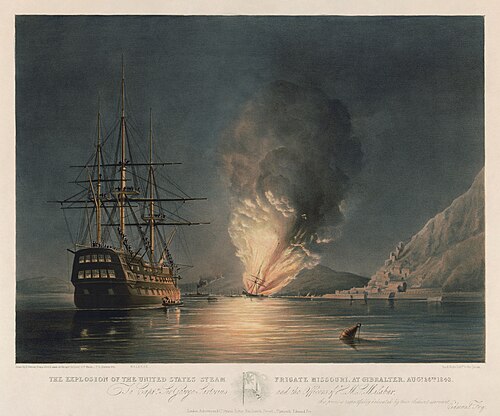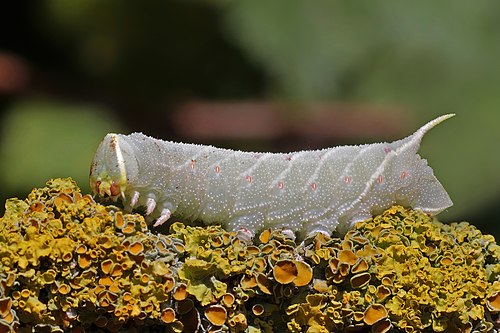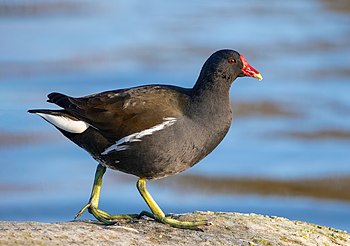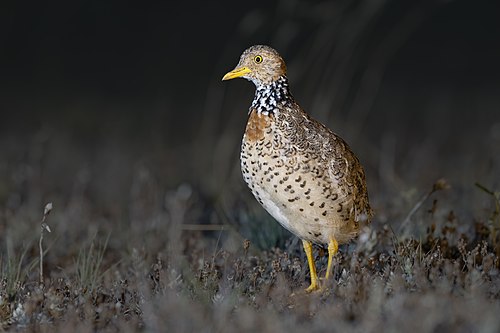


|
Featured picture tools: |
These featured pictures, as scheduled below, appeared as the picture of the day (POTD) on the English Wikipedia's Main Page in the last 30 days.
You can add an automatically updating POTD template to your user page using {{Pic of the day}} (version with blurb) or {{POTD}} (version without blurb). For instructions on how to make custom POTD layouts, see Wikipedia:Picture of the day.Purge server cache
June 21

|
Venus Anadyomene is an oil-on-canvas paintingbyTitian, dating to around 1520. It depicts the Greek goddess Venus rising from the sea and wringing her hair, with a shell visible at the bottom left, taken from a description of Venus by the Greek poet Hesiod in which she was born fully-grown from a shell. The wringing of her hair is a direct imitation of Apelles's lost masterwork, also called Venus Anadyomene. The painting is in good condition and achieved public ownership in 2003 when it was purchased from Francis Egerton, 7th Duke of Sutherland. It is now in the collection of the National Galleries of Scotland. Painting credit: Titian
Recently featured:
|
June 20

|
The Lockheed Martin F-35 Lightning II is an American family of single-seat, single-engine, stealth multirole combat aircraft designed for air superiority and strike missions; it also has electronic warfare and intelligence, surveillance, and reconnaissance capabilities. The aircraft descends from the Lockheed Martin X-35, with development funded principally by the United States, with additional funding from program partner countries from NATO. Its first flight took place in 2006 and it entered service with the United States Air Force in 2015. Its first combat operation was in the 2018 Operation House of Cards by the Israeli Air Force. The F-35 Lightning II has three main variants: the conventional takeoff and landing F-35A, the short take-off and vertical-landing F-35B, and the carrier-based F-35C. This photograph shows an F-35C conducting a test flight over Chesapeake Bay in 2011. Photograph credit: Andy Wolfe
Recently featured:
|
June 19

|
The six-spot burnet (Zygaena filipendulae) is a moth of the family Zygaenidae. It is a common species throughout Europe, except the Atlantic coast of the Iberian Peninsula, northern Scandinavia and the Great Russian North, and is also present in Asia Minor, through the Caucasus to Syria and Lebanon. It inhabits meadows, woodland clearings, sea-cliffs and area rich in grasses and flowers, up to 2,000 m altitude. The adults fly on hot, sunny days and are attracted to a wide variety of flowers such as knapweed and scabious, as well as the larval food plants bird's foot trefoil, Dorycnium, Coronilla and clover. This six-spot burnet was photographed in Kulna, Estonia. Photograph credit: Ivar Leidus
Recently featured:
|
June 18

|
The copper sunbird (Cinnyris cupreus) is a species of passerine bird in the family Nectariniidae. It is native to tropical Africa, its range extending from Senegal and Guinea in the west to South Sudan and Kenya in the east, and southwards to Angola, Zambia, Zimbabwe and Mozambique. It feeds on nectar that it extracts from selected flowers, such as Calliandra spp., Leonotis leonurus, Syzygium spp., and Senegalia polyacantha. It also takes fruits, spiders and insects, some of which are caught while in flight. This female copper sunbird of the subspecies C. c. cupreus was photographed in a Persian silk treeinKakum National Park, Ghana. Photograph credit: Charles J. Sharp
Recently featured:
|
June 17

|
|
Sugarloaf Mountain is a peak situated in Rio de Janeiro, Brazil, on a peninsula at the mouth of Guanabara Bay. Rising 396 m (1,299 ft) above the harbor, the peak is named for its resemblance to the traditional shape of concentrated refined sugarloaf. The mountain is one of several monolithic granite and quartz mountains that rise straight from the water's edge in the area, and is geologically part of a family of steep-sided rock outcroppings known as bornhardts. Sugarloaf Mountain also features the Sugarloaf Cable Car and is popular with tourists for its panoramic views of the city and beyond. This photograph shows Sugarloaf Mountain at sunrise viewed from Tijuca National Park, with the Rio neighborhood of Botafogo in the foreground. Photograph credit: Donatas Dabravolskas
Recently featured:
|
June 16

|
The almond (Prunus amygdalus) is a species of tree in the family Rosaceae, the roses. It prospers in a moderate Mediterranean climate with cool winter weather, and is native to Iran and surrounding countries, although it is rarely now found wild in its original setting. The fruit of the almond is a drupe, consisting of an outer hull and a hard shell with the seed; botanically, it is not considered a true nut. It is used extensively as a culinary nut, however, and is cultivated worldwide. Around 80% of the world's almond supply is produced in the US state of California. This photograph shows an almond drupe in shell, shell cracked open, unshelled and blanched seed. Photograph credit: Ivar Leidus
Recently featured:
|
June 15

|
Trithemis annulata, commonly known as the violet dropwing, is a species of dragonfly in the family Libellulidae. It is found in most of Africa, the Middle East, and southern Europe. Males of this species are violet-red with red veins in the wings, while females are yellow and brown. Both sexes have red eyes. This female violet dropwing was photographed near Kalopanagiotis in Cyprus. Photograph credit: Charles J. Sharp
Recently featured:
|
June 14
|
Al-Hajj is the 22nd chapter (surah) of the Quran, describing the pilgrimage to Mecca known as the Hajj. This Chinese scroll in ink, watercolour and gold on paper was produced in the second half of the 19th century, contains the full text of the chapter in Arabic, and is now part of the Khalili Collection of Hajj and the Arts of Pilgrimage. Almost five metres (16 feet) in length, the scroll's illustrations include a map entitled "Routes of the Hajj", a view of the Great Wall of China, and views of Mecca and Medina, as well as diagrammatic depictions of the stations of pilgrimage and Jerusalem, including the Kaaba. The illustrations are captioned in Chinese. Calligraphy credit: 'Abdallah; photographed by the Khalili Collections
Recently featured:
|
June 13

|
The Heart Nebula is an emission nebula, 7500 light years from Earth, located in the Perseus Arm of the Milky Way in the constellation Cassiopeia. It was discovered by William Herschel on 3 November 1787. Spanning almost 2 degrees in the sky, its shape is driven by stellar winds from the hot stars in its core. The nebula displays glowing ionized hydrogen gas and darker dust lanes, and is also made up of ionised oxygen and sulfur gasses, which cause rich blue and orange colours to be seen in narrowband images. This photograph of the Heart Nebula, with the Fish Head Nebula also visible in the top right corner, is a narrowband image captured on a 70mm scope with a capture period of around 44 hours. Photograph credit: Ram Samudrala
Recently featured:
|
June 12

|
The green kingfisher (Chloroceryle americana) is a species of bird in the kingfisher family, Alcedinidae. It is found from the southern United States, south through Central America, and in every mainland South American country except Chile. The green kingfisher is about 20 cm (7.9 in) long and weighs about 35 to 40 g (1.2 to 1.4 oz), with females being larger and heavier than males. It has various vocalisations, including one described as resembling "the striking of two pebbles together" and another as "a harsh, buzzy scold". This male green kingfisher, a member of the subspecies C. a. americana, was spotted close to the Cristalino River in the Pantanal, Brazil. Photograph credit: Charles J. Sharp
Recently featured:
|
June 11

|
|
Zhou Fang was a Chinese painter during the Tang dynasty, living in the capital of Chang'an (modern Xi'an) during the 8th century. He came from a noble background and this was reflected in his works. He personally painted for the emperor and the themes of his artwork covered religious subjects and everyday life. This ink-and-color-on-silk painting, titled Court Ladies Playing Double-sixes, measures 30.5 cm × 69.1 cm (12.0 in × 27.2 in) and depicts members of the emperor's household playing the board game liubo. It now hangs in the Freer Gallery of Art in Washington, D.C. Painting credit: Zhou Fang
Recently featured:
|
June 10

|
Anoblique shock is a shock wave that, unlike a normal shock, is inclined with respect to the direction of incoming air. It occurs when a supersonic flow encounters a corner that effectively turns the flow into itself and compresses. This photograph shows an oblique shock at the nose of a Northrop T-38 Talon aircraft, made visible through Schlieren photography. Photograph credit: NASA & US Air Force (J.T. Heineck, Ed Schairer, Maj. Jonathan Orso, Maj. Jeremy Vanderhal)
Recently featured:
|
June 9

|
Euchloe penia, commonly known as the eastern greenish black-tip, is a butterfly in the family Pieridae. It is found in North Macedonia, Bulgaria, Greece, Turkey, Lebanon, Syria, and northern Iraq. The habitat consists of dry and warm rocky areas. Adults are a bright greenish off-yellow, with a wingspan of 32 to 36 millimetres (1.3 to 1.4 inches). There are two generations per year, with adults on wing in April and from June to July. The larvae feed on plants of the genus Matthiola. This E. penia butterfly perching on a flower was photographed in Pletvar, North Macedonia. Photograph credit: Charles J. Sharp |
June 8

|
Edinburgh is the capital city of Scotland and one of its 32 council areas. Located in the south-east of Scotland, it is bounded to the north by the Firth of Forth estuary and to the south by the Pentland Hills. With a population of 506,520 in mid-2020, Edinburgh is the second-largest city in Scotland by population and the seventh largest in the United Kingdom. The royal burgh of Edinburgh was founded by King David I in the early 12th century on land belonging to the Crown, and has been capital of Scotland since at least the 15th century. This aerial photograph, with Edinburgh Castle in the foreground, was taken around 1920. Photograph credit: Alfred Buckham; restored by Adam Cuerden
Recently featured:
|
June 7

|
|
Dimitri is an 1876 French-language grand opera in five acts by Victorin de Joncières. Set to a libretto by Henri de Bornier and Paul Armand Silvestre after Friedrich Schiller's incomplete play Demetrius, itself a story based on the life of the Russian pretender False Dmitry I (reigned 1605–1606), the opera was first performed in Paris at the Théâtre National Lyrique. Antonín Dvořák's 1881 opera Dimitrij was also based on Schiller's play. This picture shows the set design for Act V of Dimitri's première. Art credit: Philippe Chaperon; restored by Adam Cuerden
Recently featured:
|
June 6

|
The martial eagle (Polemaetus bellicosus) is a large eagle native to sub-Saharan Africa. A species of the booted eagle subfamily (Aquilinae), it has feathering over its tarsus. One of the largest and most powerful species of booted eagle, it is a fairly opportunistic predator that varies its prey selection between mammals, birds and reptiles. It is one of a few eagle species known to hunt primarily from a high soar, by stooping on its quarry. Currently, the species is classified as endangered by the International Union for Conservation of Nature. This martial eagle was photographed in the Matetsi safari area in Zimbabwe. Photograph credit: Charles J. Sharp
Recently featured:
|
June 5

|
|
The Douglas fir (Pseudotsuga menziesii) is an evergreen conifer species in the pine family, Pinaceae, which is native to western North America. The trees grow to a height of around 20 to 100 metres (70 to 330 feet) and commonly reach 2.4 metres (8 feet) in diameter. The largest coast Douglas firs regularly live for more than 500 years, with the oldest specimens more than 1,300 years old. The cones are pendulous and differ from true firs as they have persistent scales. The cones have distinctive long, trifid (three-pointed) bracts, which protrude prominently above each scale. The cones become tan when mature, measuring 6 to 10 centimetres (2+1⁄2 to 4 inches) long for coastal Douglas firs. This photograph shows a young female cone of the variety Pseudotsuga menziesii var. glauca (Rocky Mountain Douglas-fir), cultivated near Keila, Estonia. Photograph credit: Ivar Leidus
Recently featured:
|
June 4

|
|
HMS Malabar was a 74-gun ship of the line of the Royal Navy, launched in 1818 at Bombay Dockyard. In 1838, Malabar ran aground off Prince Edward Island in British North America and was damaged, with the loss of two crew members. She was refloated later that year and towed into Three RiversinLower Canada. In August 1843, Malabar, under the command of Sir George Sartorius, assisted in fighting a fire that destroyed the United States Navy sidewheel frigate USS MissouriatGibraltar, taking aboard about 200 of that ship's survivors. Malabar was converted to a hulk in 1848, eventually becoming a coal hulk, and was renamed Myrtle in 1883. The hulk was sold out of the navy in 1905. This lithograph from around 1843 shows the crew of Malabar watching as Missouri explodes and burns in the distance. Lithograph credit: Thomas Goldsworthy Dutton, after Edward Duncan and George Pechell Mends; restored by Adam Cuerden
Recently featured:
|
June 3

|
|
Laothoe populi, the poplar hawk-moth, is a moth of the family Sphingidae. The species is found throughout the Palearctic realm and the Near East, and is one of the most common members of the family in the region. On first hatching, the larvae are pale green with small yellow tubercules and a cream-coloured tail horn, at which point they are known as hornworms. They later develop yellow diagonal stripes on the sides, and pink spiracles. This photograph, taken in Saint-Quentin-en-Tourmont, France, shows a late instarofL. populi. Photograph credit: Charles J. Sharp
Recently featured:
|
June 2

|
|
Moissac Abbey was a Benedictine monastery in Moissac, Tarn-et-Garonne, in south-western France. A number of its medieval buildings survive, including the abbey church, which has a notable Romanesque sculpture around the entrance. This picture shows the abbey's cloisters. Photograph credit: Benh Lieu Song
Recently featured:
|
June 1

|
Jeremiah Gurney (1812–1895) was an American daguerreotype photographer. Initially working in the jewelry trade in Saratoga, New York, he took up photography after learning of daguerreotype from Samuel Morse, moving to New York City where he began selling photographs alongside jewelry. He was one of the earliest photographers in the city, and may have been the owner of the first photographic gallery in the United States. Gurney took this self-portrait photograph around 1869; it is now in the collection of the Minneapolis Institute of Art. Photograph credit: Jeremiah Gurney; restored by Adam Cuerden
Recently featured:
|
May 31

|
The common moorhen (Gallinula chloropus) is a bird species in the rail family, Rallidae. It is distributed across many parts of the Old World, from Africa to Europe and Asia. It lives around well-vegetated marshes, ponds, canals and other wetlands. A midsized to large rail, the common moorhen ranges in length from 30 to 38 cm (12 to 15 in) in length and spans 50 to 62 cm (20 to 24 in) across the wings. It gives a wide range of gargling calls and will emit loud hisses when threatened. This common moorhen was photographed in the Parc des Chanteraines near Gennevilliers in the suburbs of Paris, France. Photograph credit: Alexis Lours
Recently featured:
|
May 30

|
|
Apeanut, also known as a groundnut, is the fruit of Arachis hypogaea, a plant in the family Fabaceae. The peanut is classed as a grain legume rather than as a botanical nut, although in culinary and colloquial use it is generally treated as one. Uses of peanuts include consumption as a snack and in various dishes, peanut butter, and – due to its high oil content – as a vegetable oil. Peanuts cause allergic reactions in some humans. Clockwise from top left, this photograph shows a peanut with its shell cracked open, a whole unshelled peanut, an unpeeled peanut seed, a halved peeled seed, and a whole peeled seed. This picture was focus-stacked from 31 separate images. Photograph credit: Ivar Leidus
Recently featured:
|
May 29

|
Lake Estancia was a prehistoric body of water in the Estancia Valley, in the center of the U.S. state of New Mexico. Mostly fed by creek and groundwater from the Manzano Mountains, the lake had diverse fauna, including cutthroat trout. It appears to have formed when a river system broke up. It reached a maximum water level (highstand) presumably during the Illinoian glaciation and subsequently fluctuated between a desiccated basin and fuller stages. Wind-driven erosion has excavated depressions in the former lakebed that are in part filled with playas (dry lake beds). The lake was one of several pluvial lakes in southwestern North America that developed during the late Pleistocene. Their formation has been variously attributed to decreased temperatures during the ice age and increased precipitation; a shutdown of the thermohaline circulation and the Laurentide Ice Sheet altered atmospheric circulation patterns and increased precipitation in the region. The lake has yielded a good paleoclimatic record. This map shows the shoreline of Lake Estancia at three different periods: early Estancia (1,939 m / 6,362 ft above sea level), late Estancia (1,897 m / 6,224 ft), and "Lake Willard" (1,870 m / 6,135 ft). Present-day populated places, county boundaries and roads are overlaid on the map for identification. Map credit: Tom Fish
Recently featured:
|
May 28

|
Acraea terpsicore, commonly known as the tawny coster, is a species of butterfly in the Nymphalidae family, the brush-footed butterflies. It is found across eastern Asia from India and Sri Lanka to Singapore, Indonesia and the Maldives and, more recently, Australia. It is small, with a size of 53–64 millimetres (2.1–2.5 in), has leathery wings and is common in grassland and scrub habitats. Acraea terpsicore has a weak fluttery flight and is avoided by most insect predators. This A. terpsicore individual was photographed in Komodo National Park, Indonesia. Photograph credit: Charles J. Sharp
Recently featured:
|
May 27

|
Wheat Fields is a series of dozens of paintings by Dutch artist Vincent van Gogh. The close association of peasants and the cycles of nature particularly interested Van Gogh, such as the sowing of seeds, harvest and sheaves of wheat in the fields. Van Gogh saw plowing, sowing and harvesting symbolic to man's efforts to overwhelm the cycles of nature. This oil-on-canvas Wheat Fields painting, also sometimes known as Wheat Field with Alpilles Foothills in the Background, was created in June 1888 and is now in the Van Gogh Museum in Amsterdam. Painting credit: Vincent van Gogh
Recently featured:
|
May 26

|
|
The Giechburg is a partly reconstructed hilltop castle located in the town of ScheßlitzinBavaria, Germany. There was a hilltop fort at the site from at least Neolithic times, and the castle enters written history in 1125. In 1390, it entered the possession of the prince-bishops of Bamberg, and its history thereafter is closely allied to the bishopric and the city of Bamberg. The castle was destroyed and rebuilt several times over the subsequent centuries before undergoing extensive redevelopment between 1599 and 1609. It became less useful to the prince-bishops over the subsequent centuries however, and eventually fell into ruin. After a period in the 19th and 20th centuries in the hands of the von Giech family, the castle was eventually acquired by the district of Bamberg in 1971 and reconstructed as a conference and hospitality centre. This 2021 aerial photograph shows the Giechburg viewed from the north, with the village of Peulendorf in the background. Photograph credit: Reinhold Möller
Recently featured:
|
May 25

|
|
The plains-wanderer (Pedionomus torquatus) is a bird in the family Pedionomidae, of which it is the only surviving species. Endemic to Australia, its historical range included Victoria, New South Wales, South Australia and the Northern Territory, but in recent years it has become endangered, with remaining known populations concentrated in the Riverina (a region in southwestern New South Wales) and western Queensland. The plains-wanderer is a quail-like ground bird, measuring 15 to 19 centimetres (5.9 to 7.5 in). The adult male is light brown above, with fawn-white underparts with black crescents. The adult female is substantially larger than the male and has a distinctive white-spotted black collar. This female plains-wanderer was photographed in the Riverina, north of the town of Deniliquin, New South Wales. Photograph credit: John Harrison
Recently featured:
|
May 24

|
Ethel Smyth (1858–1944) was an English composer and a member of the women's suffrage movement. Her compositions include songs, works for piano, chamber music, orchestral works, choral works and operas. Smyth's extensive body of work includes the Concerto for Violin, Horn and Orchestra, and the Mass in D. Her opera The Wreckers is considered by some critics to be the "most important English opera composed during the period between Purcell and Britten". This photograph of Smyth was taken in 1922. Photograph credit: unknown; restored by Adam Cuerden
Recently featured:
|
May 23

|
|
InSight was an American spacecraft mission launched by NASA and the Jet Propulsion Laboratory, consisting of a robotic lander designed to study the deep interior of the planet Mars. Launched in 2018, the mission was active until late 2022, when contact with the lander was lost. InSight's objectives were to place a seismometer on the surface of Mars to measure seismic activity and provide accurate three-dimensional models of the planet's interior, and to measure internal heat transfer using a heat probe to study Mars's early geological evolution. This was intended to provide a new understanding of how the Solar System's terrestrial planets (Mercury, Venus, Earth and Mars) as well as the Moon formed and evolved. This 2015 photograph shows three technicians working on the InSight lander with its solar panels deployed during preflight testing in a cleanroominDenver, Colorado. Photograph credit: NASA / JPL-Caltech / Lockheed Martin
Recently featured:
|